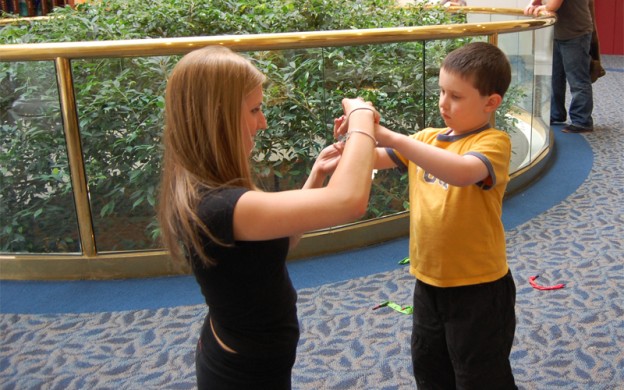
Therapy Tips
The Benefits and Guidelines of Play Therapy
The first week of February is known as National Play Therapy Week in the USA. Play therapists, psychologists, social workers, special educators, speech therapists, occupational therapists, physical therapists, and parents are all conductors on the Learning Train, especially during a child’s early years when play is crucial to learning. Here are some important play guidelines for promotion of self regulation, language, and social communication proficiency in young children with autismThe Importance of Teaching Play Skills
Teaching play skills is an important prerequisite skill for children with special needs, particularly those with Autism. Children with Autism Spectrum Disorders (ASD) can exhibit challenging behaviors and pragmatic difficulties hampering their self regulation and social skills development. This is especially true if they have experienced delayed onset of play skills development, display immature or repetitive play, or a decreased interest in play to begin with.The Benefits of Play
Play fosters social skills and improved behavior by teaching children how to better orient to person/place/time. This can then help facilitate body awareness, self control, resiliency, Causality, and problem solving; all needed for increased social communication and Executive Functioning competence.Three Strategies of Play
Play is essentially the way children practice and internalize both the rules and roles they see around them. Play helps children make sense of how their world works. There are many intervention techniques to facilitate play skills development, so that social communication proficiency can be addressed. Some of these strategies include:1. Environmental Modifications
Positioning, Visual Supports, Sanitizing the Environment (to remove distractions) and physically and concretely demonstrating the If...Then Contingent. This can include: Visual Schedules and Reinforcer Rosters, Activity Centers, open cubbies, low hanging shelves, open bins, shoe-box tasks (TEAACH style), and a Sensory Break Area.2. Toy Modifications
Hand-Over Hand Assistance, Specific Toy Selection, and Repurposing parts of toys (or broken toys) for later Verbal Description, Wh? Question, and Problem Solving Tasks3. Adaptive Play Suggestions
Here are 11 toys and activities that are perfect for adaptive play settings- Therapy balls to sit on while engaged in play for increased attention span
- Swings, rocking chairs, or Dycem™ squares to sit on while engaged in play
- Toys with non-slip surfaces and/or textured handles to facilitate a more secure grip (I sometimes laminate or modge podge relevant toys, use raised buttons, and punch smalls if possible and use fuzzy pipe cleaner handles for grip.)
- Toys with embedded audio or visual component (books and puzzles that make noise, have flashing lights within etc.)
- Puzzles with knobs of varying height/width for an easier grasp (I like Melissa and Doug™ puzzles.)
- Structured “touch & feel” activities and/or arts&crafts for increased sensory/tactile input which builds muscle memory and subsequently episodic memory
- Adaptive bikes and adaptive outdoor playground equipment
- Adaptive books and board games with velcro pictures & PECS, raised surfaces, and modified game pieces and page corners. (For example, I put styrofoam packing noodles at the bottom corner of every page of a book to facilitate turning the pages. I also put dice in a tiny Rubbermaid™ container so that they can be seen and used more easily. I sometimes use Fisher Price™ Little People as game pieces for better handling and understanding re: representation).
- Adaptive Switches and levers using one's head or hand etc.
- Adaptive Visual Supports using mini magnets, velcro dots, brass fasteners, jumbo paper clips, 3M mounting squares, play dough, keychains, pieces of cardboard boxes, container lids, and actual objects as needed. (For example, I use old, worn out cookie sheets that are still magnetized for PECS and picture vocabulary sorting for categorization. I use cardboard squares with actual objects glued on such as a plastic car or a light colored or beige wooden block with a black square drawn on it to represent computer/video etc. for AAC beginners.)
- Assistive technology or mobile technology devices such as the iPad



